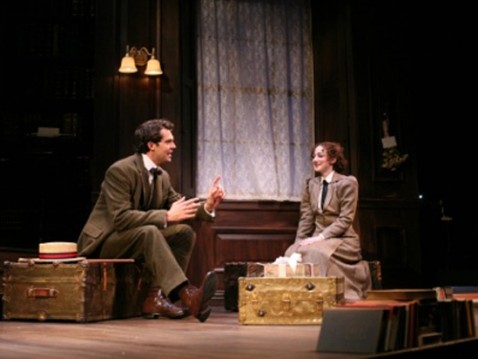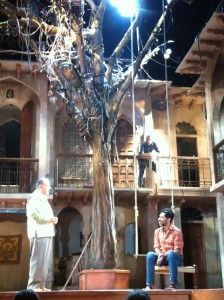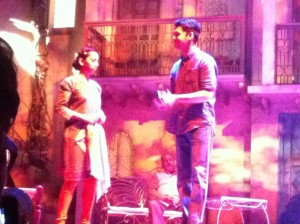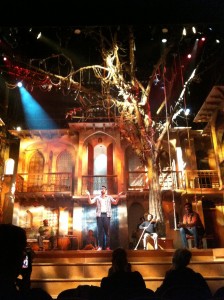Note: I attended the thirteenth preview performance of this production on Friday, May 16th. However, I feel my review will apply to the show as performed out of preview from tonight.
Many people have talked about the fact that Miss Saigon has been out of the West End for so long, there is a whole new generation who have never had the opportunity to see it. The mammoth Les Misérables rumbles on at the Queen’s Theatre, and Martin Guerre had a short and oft-altered run at the Prince Edward, where Miss Saigon landed back in London three weeks ago. That show ran for ten years at Drury Lane, a huge critical and commercial success, and then nothing in the UK but a few tours over the next fifteen years.
It’s now back in London, more a re-invention than a revival, according to lyricist Alain Boublil. I have never seen the original production so I cannot know the truth of that. What I saw last Friday night, however, was truly spectacular. The true ensemble cast were completely embodying their characters, coming together to fully deserve the standing ovation I took part in. There are more Asian actors in the lead Vietnamese roles than in the original, and yet vocally, original London cast member Jon Jon Briones‘s portrayal of the Engineer matches Jonathan Pryce’s almost eerily. Filipina-American actress Eva Maria Noblezada is the perfect Kim. I hadn’t seen the show before; what do I know what a perfect Kim is? Because seeing her perform, you believe in her completely. Carrying the whole show and always in character, Noblezada is the tour de force of the piece. It broke my heart as this show struck her like a dagger: once, twice, a third time. It is barely believable she turned 18 just two months ago because of her acting and singing abilities, but her youth brings the truth of her character to the fore.
Les Mis alumnus Alistair Brammer is the tortured Chris. His American accent is fine and his singing clear, bringing high emotion to his character’s interactions with Kim, and macho behaviour with John, played powerfully by Hugh Maynard. Everybody was on top form, with effortless performances from all, and a special mention for Rachelle Ann Go for her fantastic Gigi Van Tranh.
Visually, the show is fantastic. Matt Kinley and Totie Driver’s set designs set the tone clearly, with the glitzy seediness of Dreamland, the loud atmosphere of the Bangkok club and the utilitarian American embassy set. The new projections for the helicopter evacuation scenes are something I hadn’t really seen in theatre before, and were very effective. Andreane Neofitou returns from the original production as costume designer, and her work is, as in Les Mis, amazing. Thuy’s (Kwang-Ho Hong) commissar costume evokes the rigidity of the regime at the time.
I simply cannot overstate how brilliant this show is. I am thrilled it is back in London for myself and others to see again and again, excited for the opportunities it will give Eva Noblezada, whenever she decides to leave. I urge anyone and everyone to see the new production as soon as possible.
Miss Saigon by Claude-Michel Schönberg and Alain Boublil, with lyrics by Richard Maltby Jr and additional lyrics by Michael Mahler, is directed by Laurence Connor and is now playing at the Prince Edward Theatre, Old Compton Street, with an official opening on Wednesday, May 21st.






 A police force in England has made a splash in the social media world by tweeting every incident it dealt with over a 24 hour period from 5AM BST (midnight EST) on Thursday October 14th to the same time yesterday, Friday 15th.
A police force in England has made a splash in the social media world by tweeting every incident it dealt with over a 24 hour period from 5AM BST (midnight EST) on Thursday October 14th to the same time yesterday, Friday 15th. 3D TV is the latest idea to move out of the lab and in to the home. At the beginning of this month, Rupert Murdoch’s
3D TV is the latest idea to move out of the lab and in to the home. At the beginning of this month, Rupert Murdoch’s 